
Photograph courtesy Wikimedia Commons
North Texas is home to a whole host of interesting and engaging mammalian species. In Dallas/Fort Worth a number of these animals have adapted exceptionally well to urban living. They not only manage to survive in the city, but they thrive there as well.
Some of these animals are so capable and accomplished that it comes as no surprise that they are able to easily mold their behaviors to match the challenges presented by the urban environment. Clever and protean Gray Foxes are urban specialists. Haughty and solemn Bobcats are confident in their apex predator status. Cautious and wily Coyotes range far and wide across our urban landscape. Benign and demure White-tailed Deer take refuge in our urban green spaces. Mischievous and curious Raccoons are in contention for the most successful of all urbanites. Busy and industrious North American Beavers can be found anywhere in the city where the habitat is even remotely inviting.
There is another subset of mammals living in the city that are equally as successful as those mentioned earlier, but these critters rely on a different set of survival strategies. Species like the Striped Skunk, Nine-banded Armadillo, and Virginia Opossum have a unique set of tools to help them persevere. These animals have such potent and puissant adaptions that they are able to engage in lethargic locomotion and inattention in ways their less idiosyncratically endowed cousins cannot. They often behave as if they are unconcerned and unafraid, pursing their survival objectives at a leisurely pace and with a detached attitude.
Because of this, a brief encounter with one of these critters might leave a person with the impression that these little animals may be somehow handicapped by inability–that they are generally slow and unaware. But despite whatever inherent limitations skunks, armadillos, and opossums might have, there is no denying that they are some of the most successful mammalian species found in the city–or anywhere else for that matter. These animals and their special adaptations are extremely interesting. Let’s take a closer look at how they do it by exploring the secrets of their success…
Striped Skunk
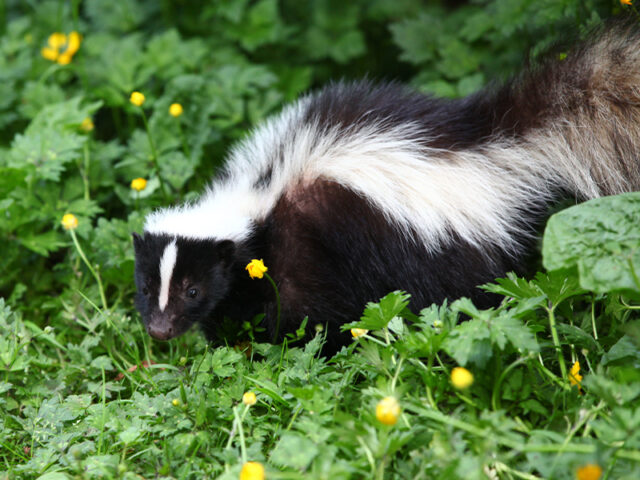
Photograph courtesy Wikimedia Commons
I think everyone is well aware of the Striped Skunk’s secret survival weapon. Skunks have the ability to spray a noxious, oily musk at attackers, delivering the skunk’s tormentor a compelling incentive to hunt elsewhere. The skunk’s spray is a powerful chemical defense against predators. Like mace or pepper spray, a skunk’s spray can cause a burning sensation in the eyes and nasal passages of an attacker. It’s enough to send most would be marauders packing.
So potent is this chemical protection that Striped Skunks have little to fear from most North Texas predators. The animals most suited to attempt hunting skunks–Coyote and Bobcats–certainly learn early in their lives the wisdom of giving the smelly black and white animals a wide berth. The skunk’s stark coloration (the pattern of which can vary greatly from individual to individual) serves as a compelling warning and reminder not to tangle with one of these well armed animals.

But even with this outstanding defensive capability, Striped Skunks are not completely impervious. Sometimes a predator will brave the spray if it is desperate and hungry enough. And reportedly, skunks remain vulnerable to large birds of prey–such as eagles and Great Horned Owls. These avian predators can penetrate the skunks defenses because they only have a very limited sense of smell. Only if the skunk’s spray makes direct contact with the bird’s eyes is the predator likely to break off an attack.

On the numerous occasions that I have encountered Striped Skunks in the field, I have found them to be quite confident in the effectiveness of their defensive protection. When approached slowly, Striped Skunks show little evidence of fear, and are usually quite satisfied to continue their foraging activities without paying me much mind–especially if I maintain a respectable distance (which I always do). Skunks typically keep their faces buried in vegetation or detritus as they search out bugs and other invertebrates. They will work a given area over quite thoroughly before moving on. All the while their foraging is done at a leisurely pace, unmotivated by the urgency of fear–even when they are fully aware that they are being watched and followed.
The few times I have surprised a Striped Skunk the outcomes have not been much different. I have found our local skunks to be very generous with their warnings. They will display and bluff as their first, best option. I have even seen a Striped Skunk do a handstand display on at couple of occasions–a habit that is suppose to be unique to their close cousin, the Spotted Skunk. Apparently, skunks are motivated to hold back on delivering a spraying until the level of harassment they receive simply can no longer be tolerated. Nonetheless, I recommend never putting a skunk to the test. Always grant them a wide berth and the requisite respect!
Nine-banded Armadillo
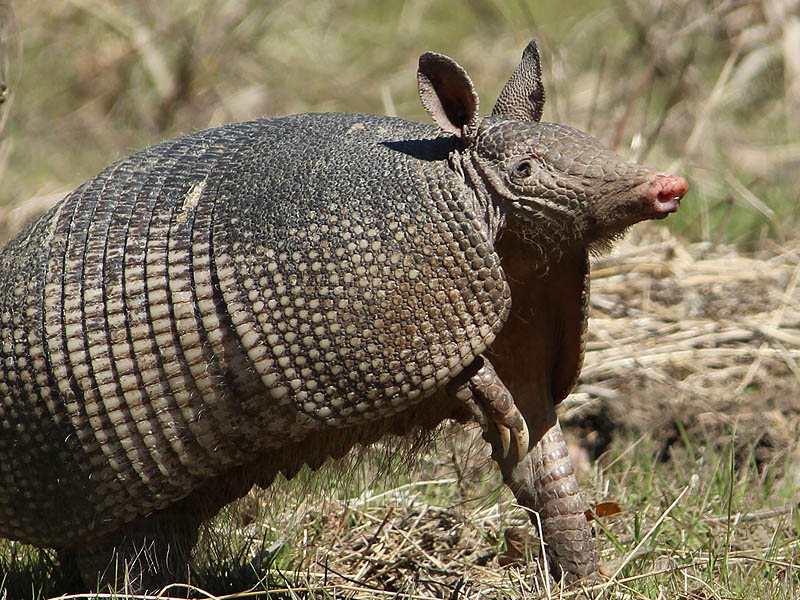
Nine-banded Armadillos are another critter that at first appears to be ill-equipped for survival. Armadillos are notorious for their lack of situational awareness. These animals have poor eyesight and marginal hearing.
Instead of sight and sound, Armadillo rely primarily upon their well-developed sense of smell. Armadillos spend much of their time with their faces buried deep in the leaf litter as they root around of the forest floor in their never-ending quest for insects and other invertebrates.
Armadillo forage enthusiastically, without much regard to possible dangers. They are able to behave this way due to the high degree of confidence they have in their protective adaptation–a suit of armor is the Armadillo’s survival secret!
Nine-banded Armadillos are encased in a heavy duty armored shell from head to toe. In North Texas this armored protection is resilient enough to make adult Armadillos almost impervious to attacks from our most capable predators–the Bobcat and Coyote. The thick, leathery armor, combined with the adult Armadillo’s size, is too much for North Texas predators to penetrate. Coyotes and Bobcats simply cannot generate the bite-force required to break through the Armadillo’s protective covering.
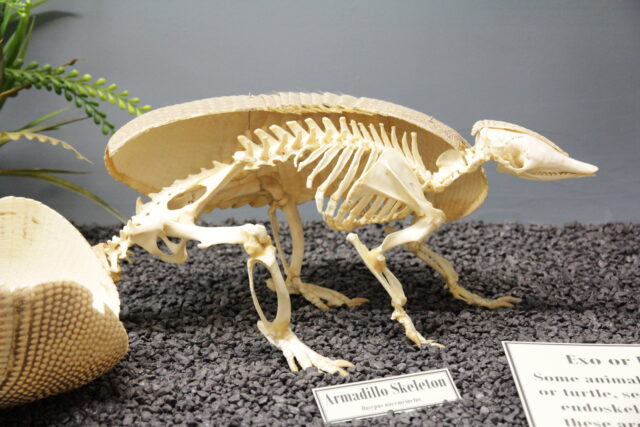
Photograph courtesy Wikimedia Commons
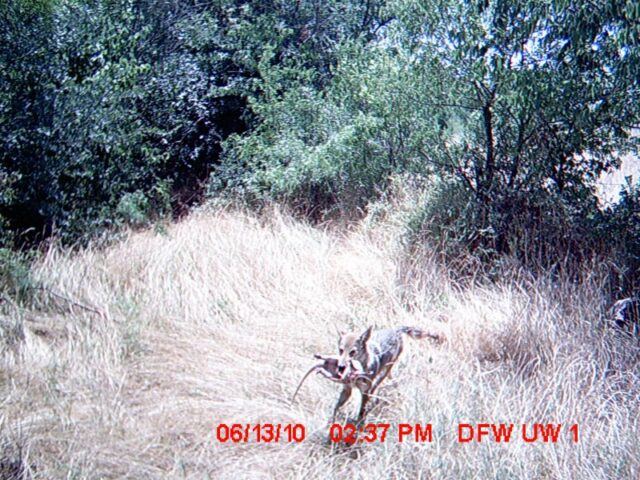
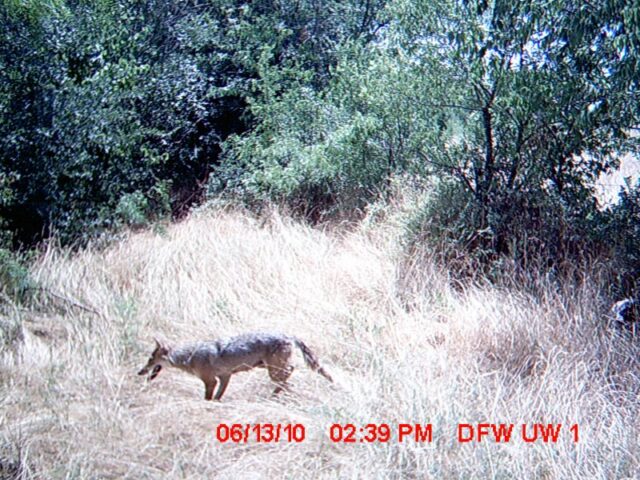
Because adult Armadillos are so secure in their suits of armor, they are able to detach from the sensory environment to a large degree in order to concentrate their focus on the search for food. The Armadillos I have encountered in the wild rarely even recognize my presence, so long as I approach them slowly and deliberately. At times, foraging Armadillos have remained so unaware of my proximity that they have walked right across the top of my boots while going about their business. On other occasions, I have crouched right next to an unsuspecting Armadillo, taking pictures at near point blank range; all without alerting the preoccupied little critter.
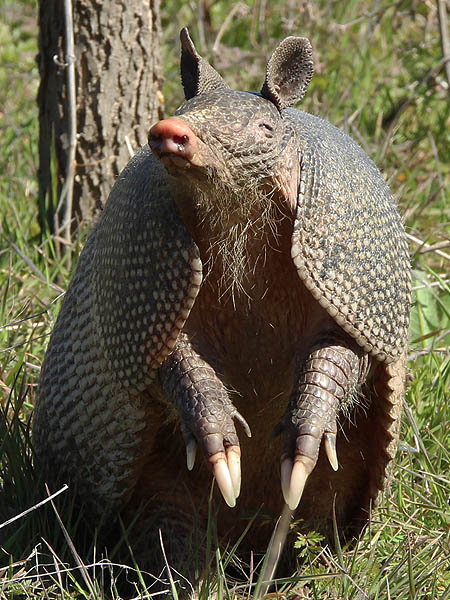
though I am only three feet in front of him, with a beeping camera,
he still cannot pinpoint my location.
During a few of these photography sessions, the subject Armadillo will show signs that they have detected a clue that something is not quite right. Sometimes they will even rise up on their hind legs for a sniff and a better look around. Rarely have they every put their finger on exactly what the cause for concern was. Typically they go right back to foraging in short order, never minding that I am stationed just a few feet away.
When startled thought, Armadillos are capable of responding with surprising bursts of speed. In these cases its not uncommon for them to leap high into the air before darting off into cover at breakneck speeds.
Nine-banded Armadillos can also demonstrate an inclination to be ornery. On one occasion I watched a grumpy Armadillo harass the members of a small Turkey Vulture congregation that were sunning their wings on a patch of earth that the Armadillo wanted for himself. In this case the Armadillo was successful in driving away the big black birds, as the vultures quickly tired of the Armadillo’s unrelenting harrying.
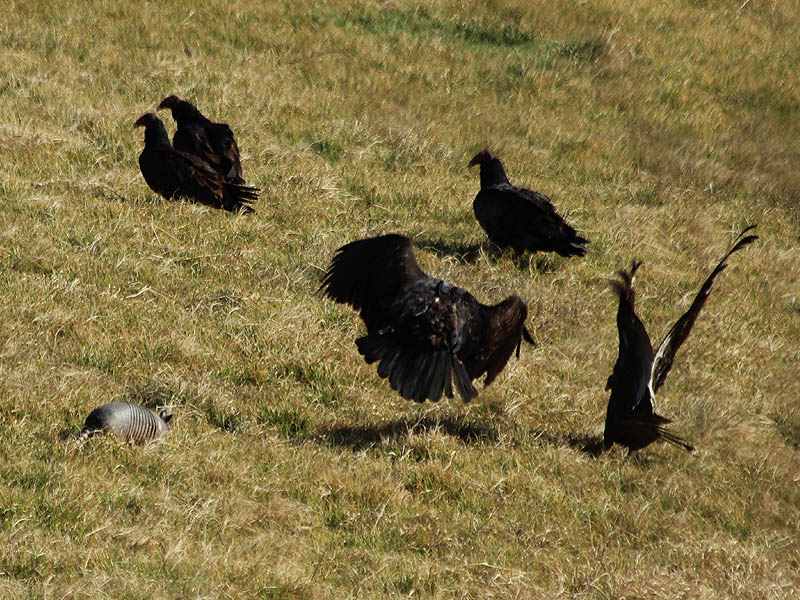
Another time I recorded trail camera footage of a perturbed Armadillos chasing a much larger Raccoon across the forest floor in a comical effort to drive the masked mammal out of the glade the feisty Armadillo considered his own. Even skunks will flee from an angry Armadillo–see the videos below!
Virginia Opossum
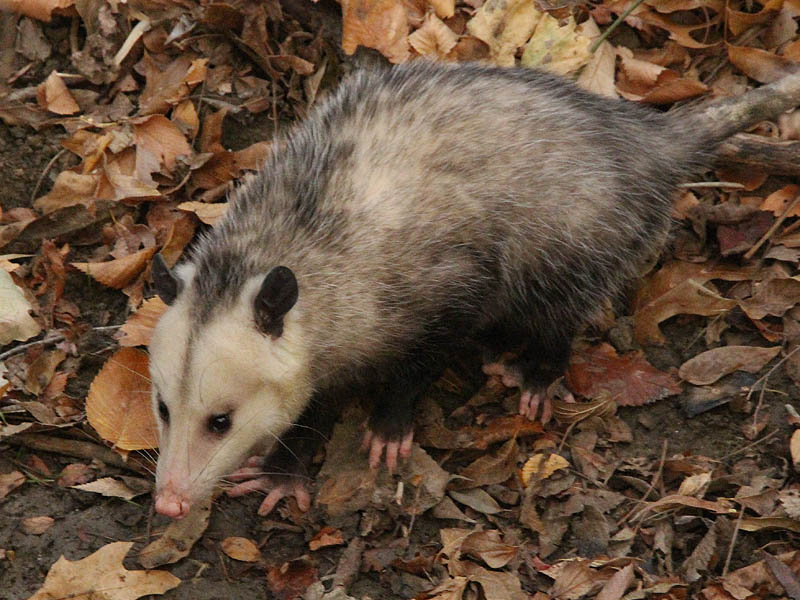
The Virginia Opossum is a unique animal, being only marsupial found in the United States. The key elements of the Virginia Opossum’s survival strategy are more difficult to identify than those of its Slow and Unaware cousins–the skunk and armadillo. In comparison Opossums have no armor or chemical defense. They are equipped with only limited eyesight and hearing. And they do not impress as being particularly bright or curious. Opossums generally move about at a very slow and leisurely pace. At first glance, you might suspect these unassuming creatures would have very little chance against the whole host of North Texas predators they have to contend with. But don’t be fooled! Virginia Opossums are one of the most successful wild animals living with us here in the Dallas/Fort Worth area. They are abundant all across the metroplex and they inhabit many different habitats.
So how do they do it? How do Opossums beat the odds?
One of the most reliable tools in the Opossum’s bag of tricks is its ability to feign death when attacked. This involuntary response to extreme stressors leaves the Opossum catatonic and unresponsive. Often an accompanying release of noxious fluid from the anus will result as well. This bizarre behavior seems to confound many a potential predator, leaving the Opossum safe to Opossum again another day.
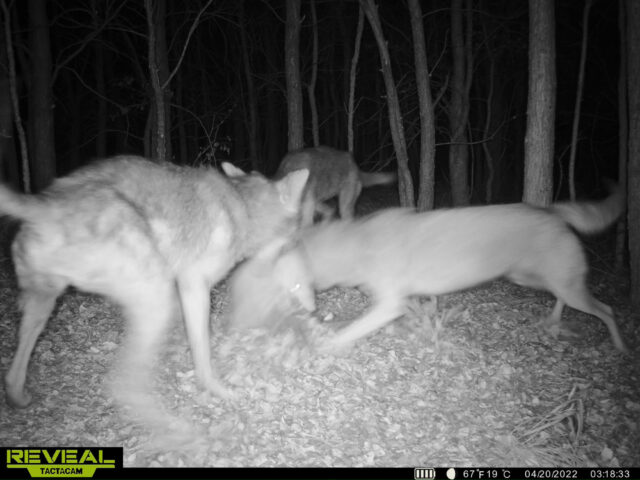
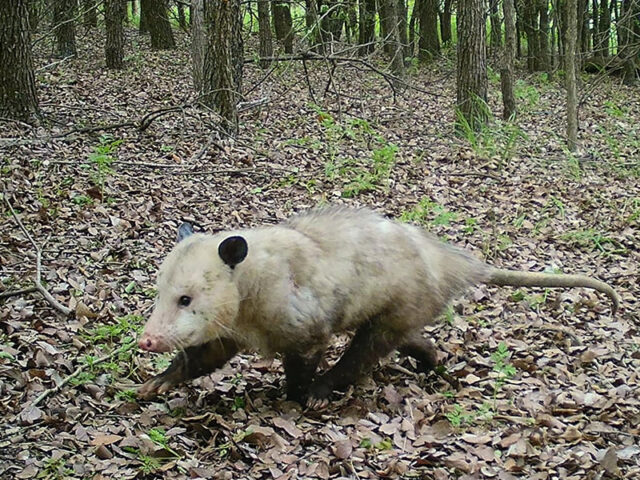
(notice the slight injury on his left shoulder). Playing possum is surely what saved this little guy.
But this trick is not all these unusual animals have going for them. Opossums are great generalists. They can eat almost anything. They can survive in a number of different habitats. Opossums are excellent climbers. They have hands and feet that can grasp. They have a prehensile tail that they use to carry bundles of bedding materials back to their dens. Opossums have a low body temperature that gives them some level of resistance to rabies, and they have a special protein in their blood that neutralizes several kinds of snake venom. Opossums can even be aggressive in certain circumstances. See the video below…
Over the last several years a narrative has emerged suggesting that Opossums are voracious devourers of ticks, and that for this reason they should be highly valued. On closer examination this yarn appears to be something of an exaggeration. But that’s okay. We do not need to invent reasons why Opossums are valuable to the ecosystem, we can just rest assured that they are, whether they eat copious amounts of ticks or not.
Field And Stream – New Study Says Possums Don’t Like Eating Ticks
Outdoor Illinois Journal – Debunking the Myth: Opossums Don’t Eat Ticks
Science Direct – Are Virginia opossums really ecological traps for ticks?
So, now we know Opossums are integral members of the ecosystem and that they are also preeminent survivors. That’s a pretty good combination! Maybe not so slow and unaware after all!



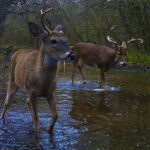
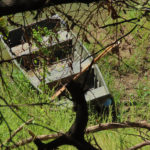


Another fascinating article, Chris. Thank you.
I loved the funny videos, too, especially the one of the skunk giving its warning!